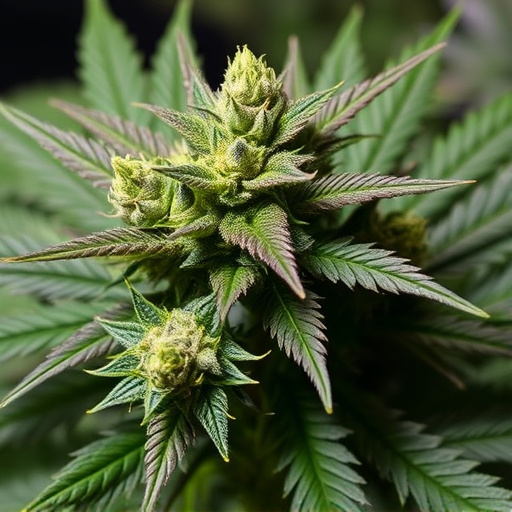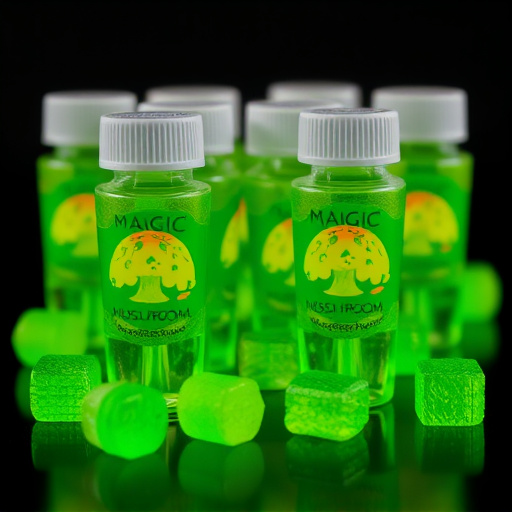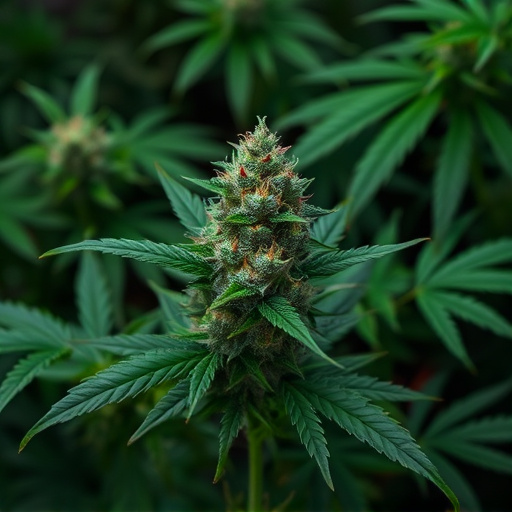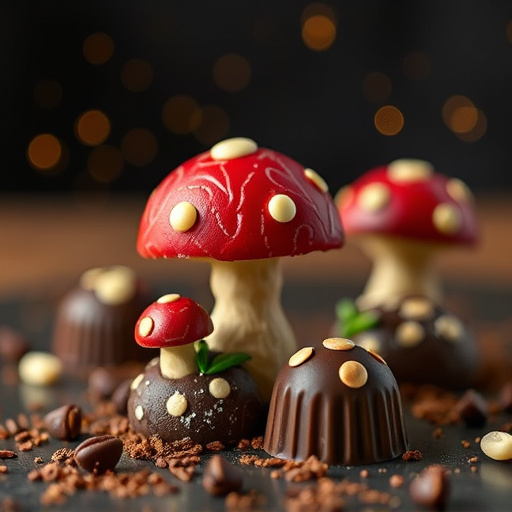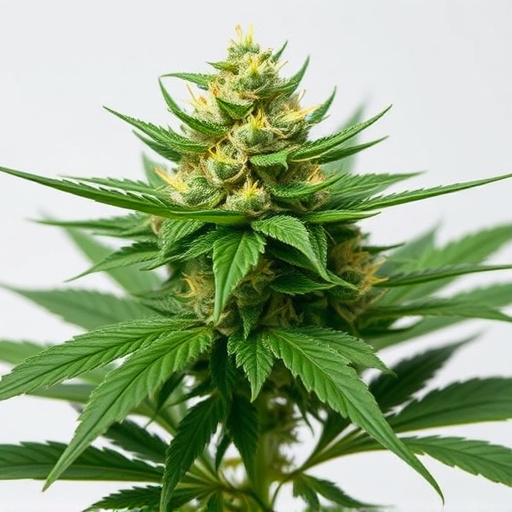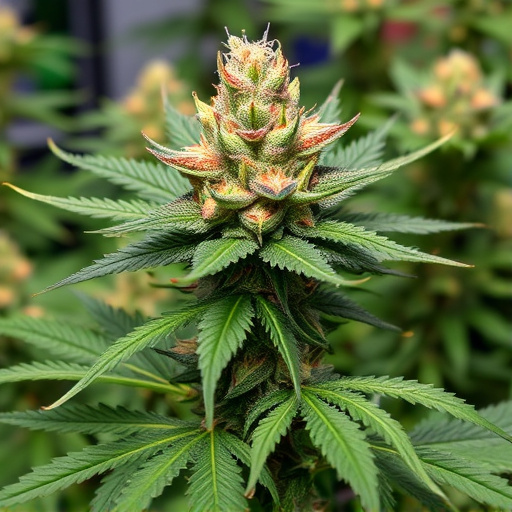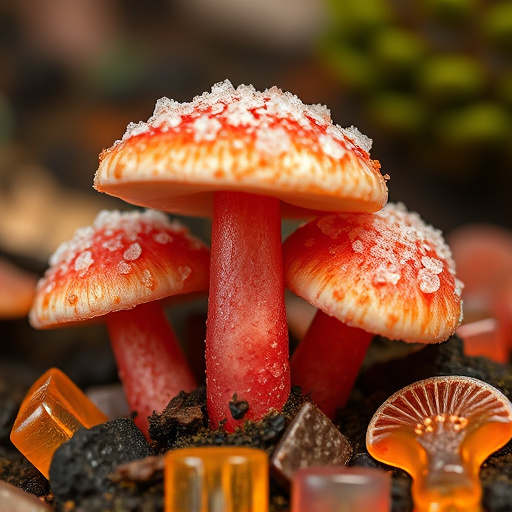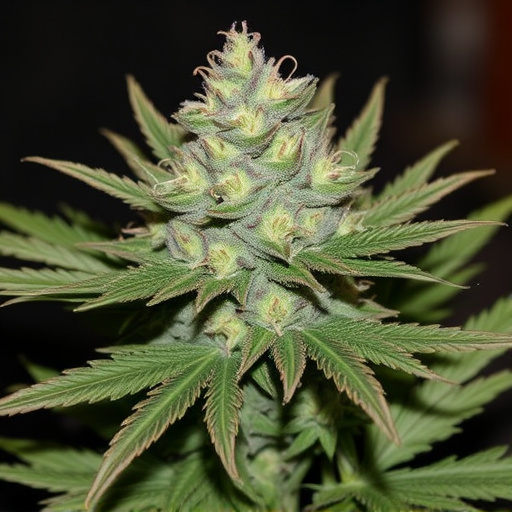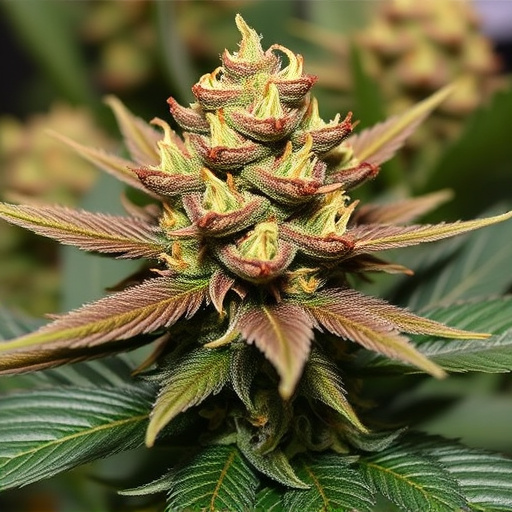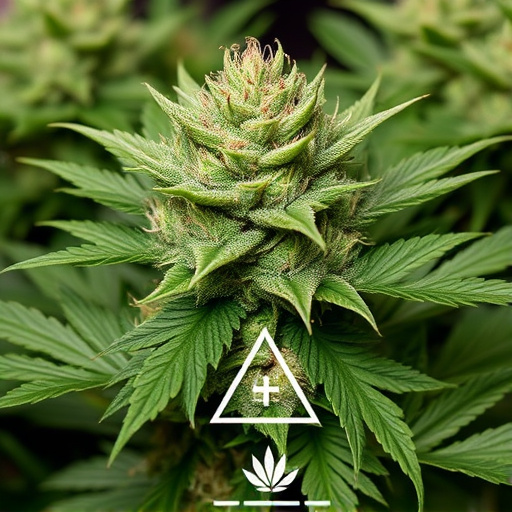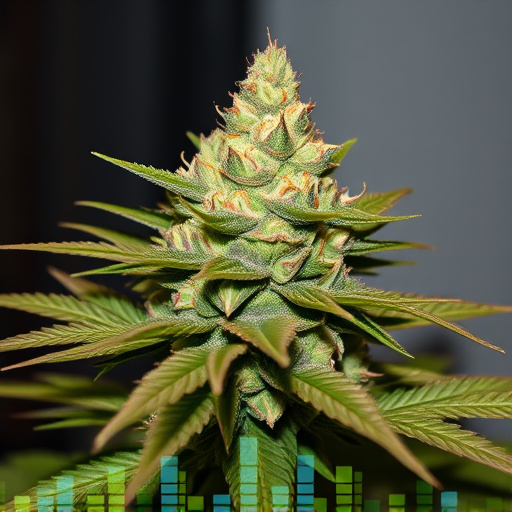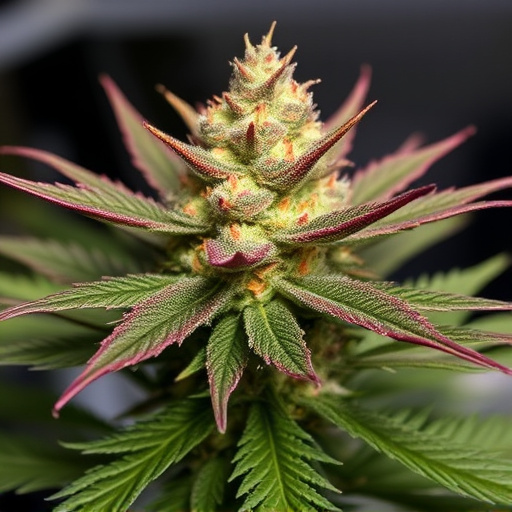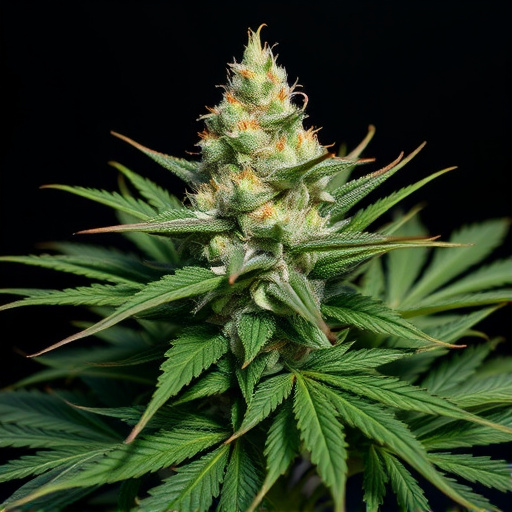Big bud strains of cannabis undergo a complex transformation as they mature, driven by shifts in cannabinoid and terpene levels. This biochemical process leads to the revelation of pigments like carotenoids and anthocyanins, creating vibrant colors ranging from amber to purple. These color variations not only enhance visual appeal but also indicate specific terpene profiles, influencing aroma, flavor, and potential therapeutic benefits. Understanding these transformations is vital for cultivators aiming to optimize harvest timing and deliver high-quality big bud strains that meet consumer expectations.
Discover the captivating transformation of cannabis flowers as they change color, a process driven by complex biological mechanisms. This article delves into the science behind these vibrant shifts, exploring how factors like pigmentation and terpene production contribute to the unique aesthetics of different strains, particularly focusing on the allure of big bud strains. Uncover the secrets that make each bloom a work of art in nature’s vast tapestry.
- The Science Behind Cannabis Flower Color Changes
- How Big Bud Strains Are Affected by Pigmentation Shift
- Understanding Terpene Production and Its Role in Color Evolution
The Science Behind Cannabis Flower Color Changes
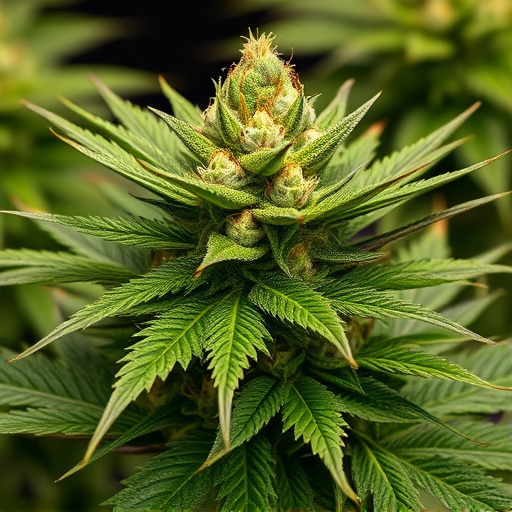
The transformation of cannabis flowers from verdant green to a spectrum of vibrant hues is far from merely aesthetic; it’s a scientific process driven by complex chemical reactions. As cannabis plants approach maturity, particularly with big bud strains known for their dense and potent blooms, the balance of cannabinoids and terpenes within the plant shifts. This biochemical shift triggers changes in chlorophyll production, the green pigment responsible for photosynthesis. As chlorophyll levels decrease, other pigments like carotenoids (responsible for yellows and oranges) and anthocyanins (reds and purples) become visible, resulting in the stunning color variations we associate with ripe cannabis flowers.
These color changes aren’t just indicators of ripeness; they can also reveal crucial insights into a strain’s potential effects. Terpenes, aromatic compounds that contribute to the distinct smells and flavors of different cannabis varieties, often align with specific colors. For instance, higher levels of beta-caryophyllene, known for its relaxing properties, are often associated with reddish or purplish tints. Understanding these scientific underpinnings allows cultivators to carefully monitor their plants’ progress, ensuring optimal harvest timing for the desired effects and aromas, particularly in the pursuit of the most sought-after big bud strains.
How Big Bud Strains Are Affected by Pigmentation Shift
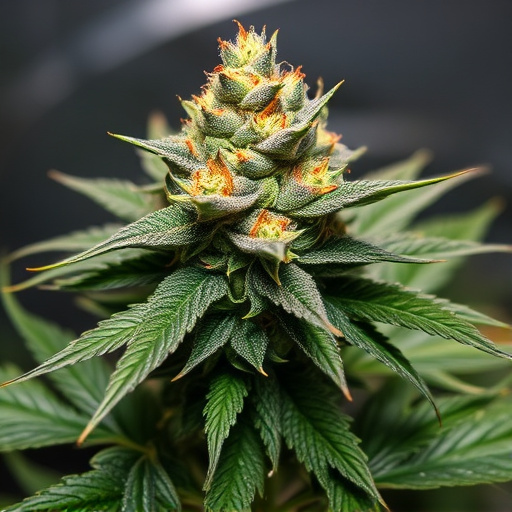
Big bud strains of cannabis experience a remarkable transformation as they approach maturity, largely due to changes in pigmentation. These shifts in color are not merely aesthetic; they indicate crucial advancements in the plant’s development. As the flowers age, specific pigments like chlorophyll, which gives young buds their vibrant green hue, begin to break down. This process allows other pigments, such as carotenoids and anthocyanins, to emerge, contributing to the characteristic amber, orange, or purple tones often seen in mature cannabis flowers.
The pigmentation shift not only alters the visual appeal of big bud strains but also impacts their aroma, flavor, and potential therapeutic effects. Carotenoids, for instance, are responsible for many of the floral and fruity notes in cannabis, while anthocyanins can impart a range of sweet to sour flavors. Understanding these transformations is essential for cultivators aiming to optimize the final product, ensuring that each big bud strain meets the expectations of discerning consumers.
Understanding Terpene Production and Its Role in Color Evolution
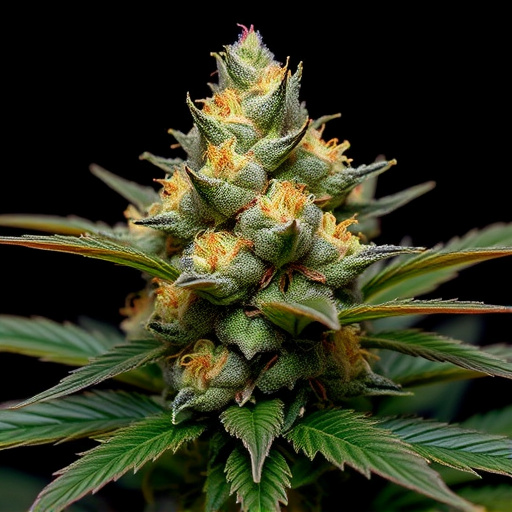
Cannabis flowers undergo a mesmerizing transformation as they mature, and one of the most striking changes is the evolution of color. This process isn’t just about aesthetics; it’s closely tied to the plant’s natural defense mechanisms and the production of terpenes, aromatic compounds that play a crucial role in the cannabis experience. Terpenes not only contribute to the distinct odors associated with different strains, like the fragrant profiles of big bud strains, but they also serve as a type of chemical warfare against potential threats.
As flowers age, the balance of pigments shifts, allowing certain colors to emerge. This transformation is influenced by the plant’s terpene production. For instance, myrcene, a common terpene in many cannabis varieties, has been linked to the development of yellow and orange hues. Meanwhile, other terpenes like limonene can enhance green shades. The interplay between these compounds creates the vibrant palette we associate with ripened cannabis flowers, adding another layer of complexity to the already intriguing world of big bud strains.
Cannabis flower color changes are a fascinating process driven by scientific mechanisms, including shifts in pigmentation and terpene production. These transformations, particularly evident in big bud strains, offer insights into the plant’s adaptability and allure. Understanding these evolutionary adaptations not only enriches our appreciation for cannabis diversity but also informs cultivation practices, enhancing the overall experience of consumers who seek the unique characteristics of different strains.
